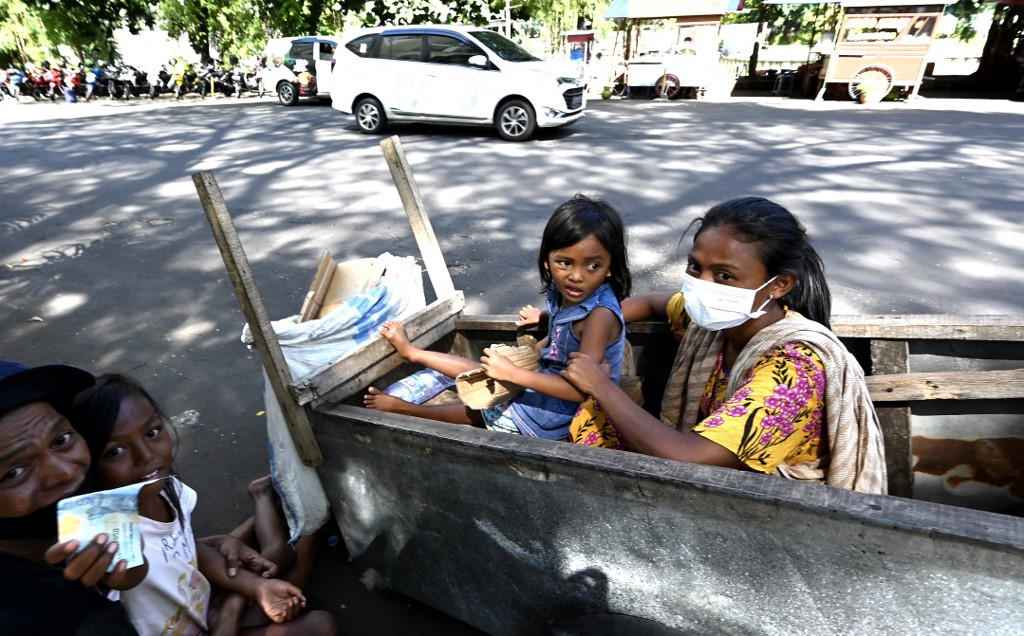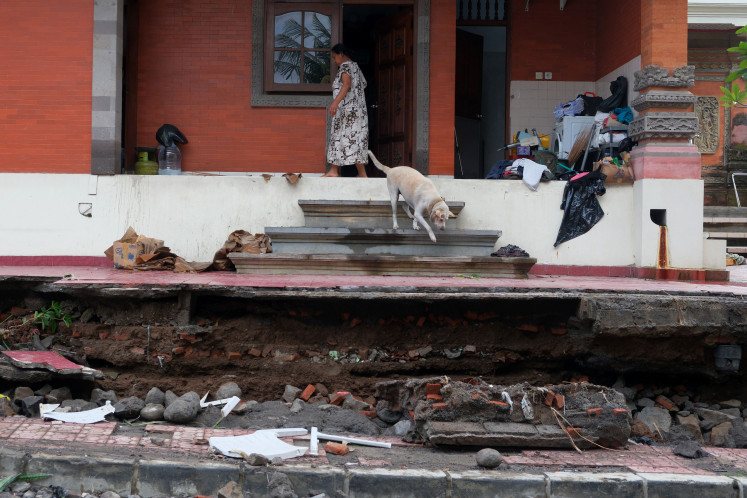Popular Reads
Top Results
Can't find what you're looking for?
View all search resultsPopular Reads
Top Results
Can't find what you're looking for?
View all search resultsUndernourishment on rise after years of improvement
FAO estimates that the prevalence of undernourishment in Indonesia rose to 6.5 percent in 2020.
Change text size
Gift Premium Articles
to Anyone
I
ndonesia may have seen a rise in the prevalence of undernourishment, while the rate of stunting among children under 5 years of age remains “very high” amid the COVID-19 pandemic, the Food and Agriculture Organization (FAO) has reported.
According to FAO estimates, the three-year moving average on the national prevalence of undernourishment, a core indicator of hunger, rose to 6.5 percent in 2020 from 6.4 percent a year earlier. That equates to around 17.6 million people.
The COVID-19 pandemic, which has caused an economic slump across the world, led to a rise in the prevalence of undernourishment, according to the FAO.
“In many parts of the world, the pandemic has triggered brutal recessions, jeopardized access to food and affected the entire food system,” Rajendra Aryal, the FAO representative for Indonesia and Timor-Leste, told The Jakarta Post in a text message on Thursday.
“The pandemic has exposed profound inequalities and injustices of agrifood systems in our society.”
The trend seen in Indonesia was in line with that seen at least across the Asia-Pacific region, where the pandemic led to a 17 percent increase in the number of undernourished to 376 million, undoing 20 years of progress, the FAO reported.
Read also: Food security on the rise, yet pandemic takes its toll
In 2020, Indonesia’s economy plunged into its first recession in more than two decades as GDP contracted by 2.07 percent, Statistics Indonesia (BPS) data show. Meanwhile, the inflation rate was muted at 1.68 percent, lower than Bank Indonesia’s target.
That said, progress in reducing undernourishment in Indonesia had stagnated even before the pandemic hit the country, FAO data show. The three-year moving average undernourishment rate was estimated at 6.4 percent between 2018 and 2019.
The prevalence of stunting among children under 5 years of age in Indonesia is estimated to have improved marginally to 31.8 percent in 2020 from 32 percent a year earlier, according to a joint report from the World Bank, the World Health Organization and the United Nations Children’s Fund (UNICEF).
While the estimate suggests a slight improvement, Indonesia remains in the “very high” category for stunting at a prevalence above 30 percent, along with other lower-middle income and low-income countries.
In the Asia-Pacific region, Indonesia is among the 10 countries with a very high prevalence of stunting among under-5-year-olds. The other nine countries are Afghanistan, Bangladesh, India, Laos, the Marshall Islands, Nepal, Pakistan, Papua New Guinea and Timor-Leste.
Andriko Noto Susanto, head of food availability and security at the Food Security Agency (BKP), said the prevalence of undernourishment was highly correlated with the poverty rate.
The poverty rate rose to 10.19 percent in September 2020 from 9.22 percent a year earlier, BPS data show, as the pandemic sent the poverty rate back to a level last seen in 2017. However, the rate has since fallen a little, to 9.71 percent in September 2021.
Read also: Poverty rate falls to prepandemic level
Andriko said the government had tried to mitigate the pandemic impact on food security by safeguarding production and distribution, which faced disruption from temporary mobility curbs enforced in large parts of the country.
“We will keep pushing the Agriculture Ministry’s programs related to production, such as seed, fertilizer and production facility support,” Andriko told the Post in a phone interview on Friday.
In July 2021, the government raised its social protection budget by 25.7 percent to Rp 186.4 trillion (US$13 billion) as part of the COVID-19 stimulus, Finance Ministry data show. This includes the Staple Food Card program and Family Hope Program (PKH), both of which were aimed at helping poor households meet basic needs, such as for food.
Bustanul Arifin, an expert on agriculture from the Institute of Development for Economics and Finance (Indef), said that, without the government’s support, the pandemic’s impact could have been worse.
Moreover, aside from the poverty data, employment data also pointed to the beginning of a recovery from the pandemic, Bustanul said, citing the small decline in agriculture workers in rural areas.
“So, the bottom has been hit and we are moving toward recovery,” Bustanul told the Post.










